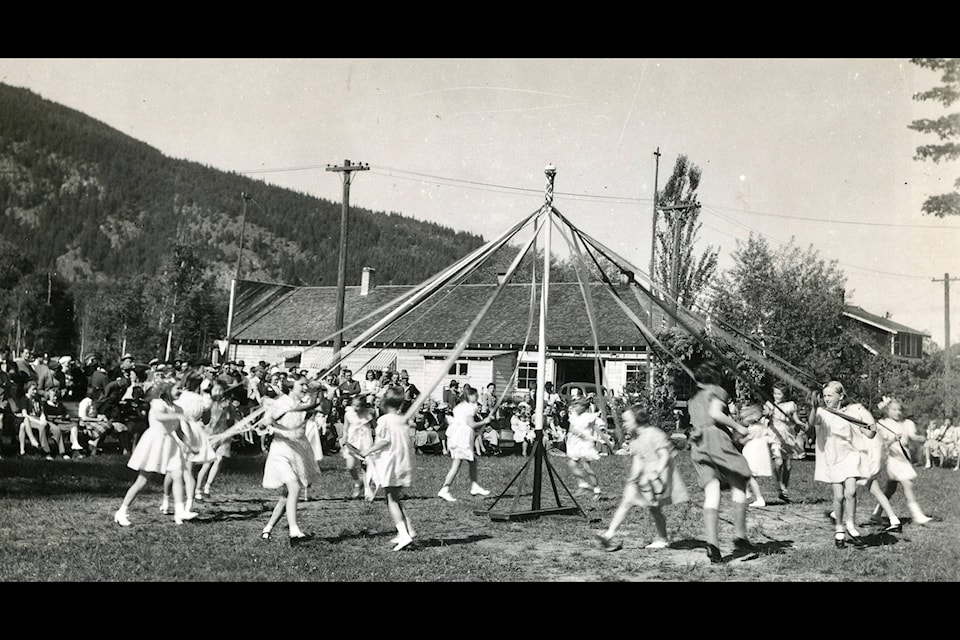Shuswap Passion by Jim Cooperman
More than 80 years ago, Erskine Burnett, a farmer from Coldstream, had the same idea as I had, to write a book about the geography of the Shuswap.
The result was a scrapbook journal called The Shuswap Country, which is filled with his black-and-white photos and stories about the places and people he visited, painstakingly typed on pieces of paper that he cut to size and pasted on the pages.
Multiple copies were made using carbon copies of the text, and these were given to family and friends. The Enderby Museum has two original copies and most of the photos and the album can be found on an online archive called ARCABC.
Beginning in approximately 1937, Burnett travelled extensively throughout the region, meeting with local residents, visiting farms and businesses, hiking, fishing and with a guide adventuring into the alpine by horseback. He also used many of the same photos for another scrapbook entitled The Inland Empire. His accounts include poetic and humorous descriptions of the areas visited and events he attended that, together with the images, provide a wonderful historical record of what the Shuswap was like then.
The Shuswap Country is divided into 12 sections that describe each of his journeys throughout the region, including trips to the nearby communities of Kamloops, Armstrong and Vernon. His goal for the project as stated in the Foreword was to “…induce others to enter and to enjoy this great natural playground” that is also “…something of an inspiration as well.” He described the Shuswap as, “…a land of wide river valleys and many-armed lakes, bordered by long forest-clad ridges.”
The late 1930s was a period of transition. As the world emerged from a long bout of economic depression, highways and bridges were being built and communities were beginning to grow again. Some of the original settlers were still alive and Burnett interviewed a few of them. Tourism was in its infancy and most visitors came to the Shuswap to fish and they stayed in either lakeside cabins or in the new auto camps.
Most every small community had its own general store and community hall, and for those next to the railway line there was a train station. Burnett made sure to explore all the side roads, visiting sawmills, farms and businesses along the way. For example, in Turtle Valley he headed up the hillside to take in the vista and encountered a flock of several hundred sheep. Sitting down with sheepherder Tony Gibson, he asked how the ewes know which lamb is theirs and Tony replied, “it was through a sense of smell, as each one had a distinctive smell.”
At Notch Hill, Burnett observed the pusher engines used to assist the trains over the divide between Chase and Tappen and noted, “The trim appearance of the station and the adjoining flower beds suggest that the big company is not altogether a soulless corporation.” In Salmon Arm, he met with Reeve Damgaard at his “tree-embowered” home overlooking the lake who explained how he always tried to spare the trees bordering the municipal roads. Damgaard also boasted that “the District Municipality of Salmon Arm stands in an enviable position, being practically clear of debt owing to a policy of pay-as-you-go.”
His story about Sicamous, that at that time had to be accessed via a ferry across the Narrows, included a recommendation to contact Frank McMahon, who will “take you out in his trim cabin-cruiser to the settlement of Seymour Arm.” Burnett and his family used his services to go across the lake where they stayed at one of the “modern and convenient” cabins in Nightingale Lodge, a tourist and fishing camp that was located near Canoe Point.
East of Sicamous, Burnett described the scene in each of the small communities including what little was left in Taft, where there had been a town serving the nearby sawmill. At Three Valley Gap, Burnett headed south along Frog Creek to visit a homesteader and fish beneath the falls. On his way to Mabel Lake, he saw remnants of the railway used to haul timber out of the valley to the nearby sawmill.
The next column will describe his journeys around Lumby and Cherryville, including his camping trip into the Monashees.
